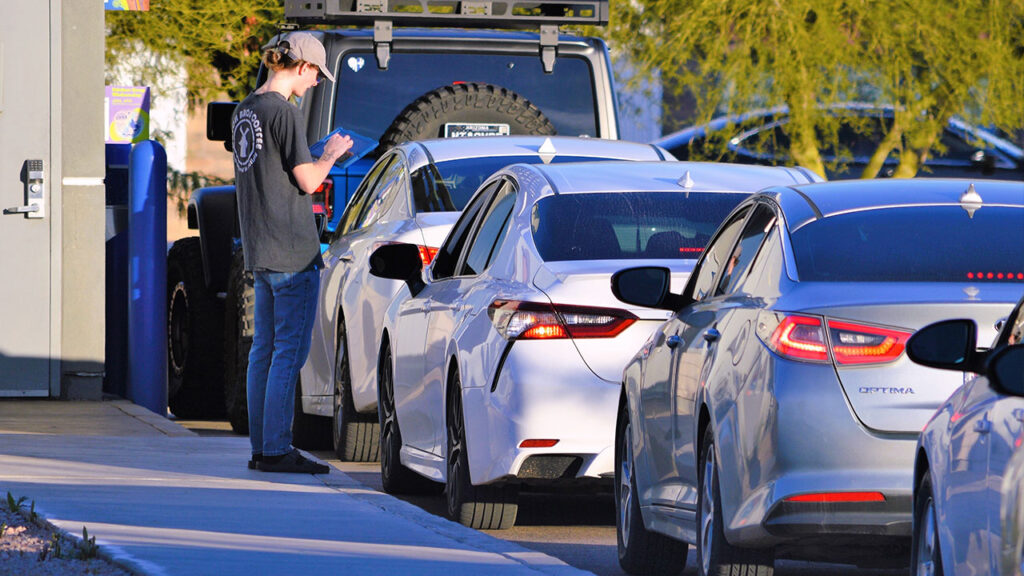Tech’s Most Controversial Startup Now Makes Drone-Killing Robots
Share
[aggregation-styles]
Bloomberg Subscription
Bloomberg Subscription
Jason Levin stood on a craggy hill on a Southern California ranch in late July and prepared to destroy a drone. First he grabbed the controls for an Up Air One, a remote control hobbyist model that retails for about $300, and steered it until it was hovering about 100 feet above the ground. Next he used a laptop to activate a system he’d spent the past several months building.
A second drone roughly the size of the Up Air quadcopter spun into action, buzzing like a mechanical wasp as it ascended to about 20 feet below its target. As it hovered, a crowd of Levin’s colleagues gathered around. A prompt appeared on-screen asking for permission to attack. Levin tapped a button, and the second drone, dubbed the Interceptor, shot upward, striking the Up Air One at 100 mph. The two aircraft somersaulted skyward briefly, then they plummeted back to earth and landed with two satisfying thuds. Levin grinned and explained that he hadn’t been controlling the Interceptor after telling it to attack—it finds targets and steers toward them on its own. If the first collision doesn’t take its quarry down, the drone can circle back and strike a second and third time, all by itself. “It’s a good feeling as an engineer,” he said. “You’ve put in the work, and it knows what to do. It’s like sending your kid off to college.”
A second drone roughly the size of the Up Air quadcopter spun into action, buzzing like a mechanical wasp as it ascended to about 20 feet below its target. As it hovered, a crowd of Levin’s colleagues gathered around. A prompt appeared on-screen asking for permission to attack. Levin tapped a button, and the second drone, dubbed the Interceptor, shot upward, striking the Up Air One at 100 mph. The two aircraft somersaulted skyward briefly, then they plummeted back to earth and landed with two satisfying thuds. Levin grinned and explained that he hadn’t been controlling the Interceptor after telling it to attack—it finds targets and steers toward them on its own. If the first collision doesn’t take its quarry down, the drone can circle back and strike a second and third time, all by itself. “It’s a good feeling as an engineer,” he said. “You’ve put in the work, and it knows what to do. It’s like sending your kid off to college.”
By Joshua Brustein | 3 Oct 2019
RELATED TOPICS:
Dollar Trades Lower With Fed Cut In View, On Course For Monthly Drop
U.S. /
9 hours ago
Visalia Semi Crash Injures Amazon Truck Driver After Red Light Collision
Local /
9 hours ago
Evacuation of Gaza City Would Be Unsafe and Unfeasible, Says Head of Red Cross
World /
9 hours ago
Most Trump Tariffs Are Not Legal, US Appeals Court Rules
Courts /
10 hours ago
New $250 Visa Fee Risks Deepening US Travel Slump
Travel /
10 hours ago
Prime Minister of Yemen’s Houthi Government Killed in Israeli Strike
World /
10 hours ago
California Schools Reverse Truancy Trends. Improving Reading Scores Could Be Next
Opinion /
10 hours ago
Judge Blocks Pillar of Trump’s Mass Deportation Campaign
WASHINGTON — A federal judge on Friday blocked the Trump administration from carrying out fast-track deportations of people detained far fro...
Latest /
7 hours ago
Categories
Latest
Videos

Latest /
7 hours ago
Judge Blocks Pillar of Trump’s Mass Deportation Campaign

Crime /
9 hours ago
Visalia Driver Arrested for DUI After Multiple Crashes and Pedestrian Injured

U.S. /
9 hours ago
Dollar Trades Lower With Fed Cut In View, On Course For Monthly Drop

Local /
9 hours ago
Visalia Semi Crash Injures Amazon Truck Driver After Red Light Collision

World /
9 hours ago
Evacuation of Gaza City Would Be Unsafe and Unfeasible, Says Head of Red Cross

Courts /
10 hours ago












